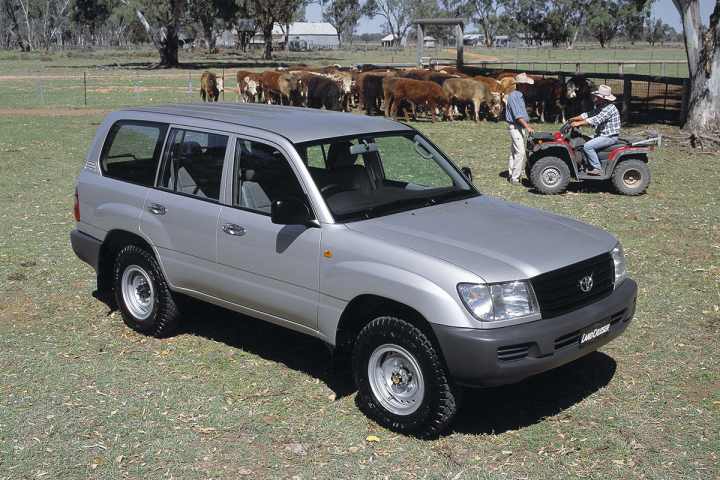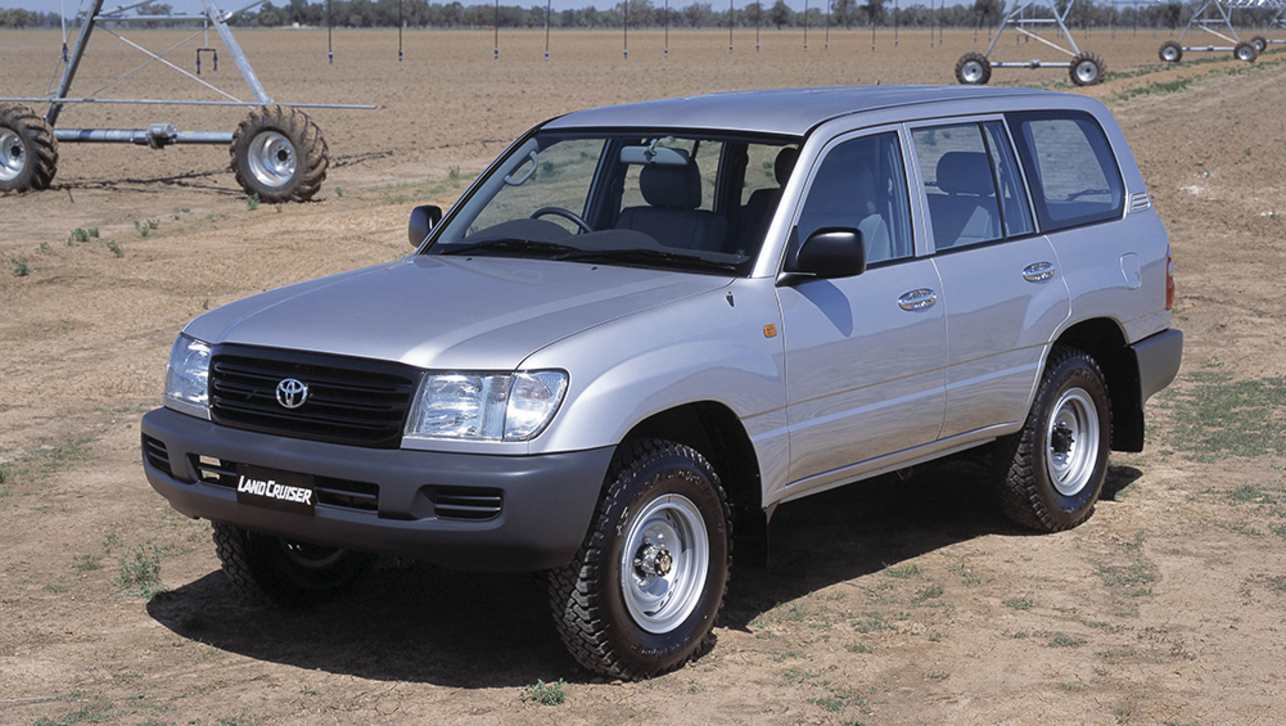Toyota's 105 Series LandCruiser bridged the gap between the old 80 Series and the new 100 Series. And in the process won an army of admirers.
Even though there's a firmly held view in the trade that the 80 Series LandCruiser was as good as it ever got, that didn't mean that Toyota didn't stop upgrading its full-sized off-road station-wagon line-up. And by 1998, that meant that the 80 Series was eventually replaced after a solid eight years as the company's front-line wagon offering.
Interestingly, despite being known as the best of the breed, the 80 Series had the shortest lifespan of all of Toyota's 'comfort' LandCruiser models; the 55 Series sold for 13 years, the 60 for 10 years, the 100 Series for nine years and the current 200 Series has now been on the market for 12 years.
In any case, the vehicle that followed the mighty 80 was called the 100 Series. But, typical of Toyota's code-naming for its Cruiser range, it wasn't as simple as that. Mind you, there was good cause for differentiating the various permutations in the 100 Series line-up, especially since buyers of this type of vehicle tended to be pretty conservative types who didn't always fall for the something-new-must-be-something-better line. And one of the things the market was a bit leery about was the 100 Series' newfangled independent front suspension. Sure, the 80 Series had introduced us to coil springs, but the advantage in ride comfort terms was immediately obvious. And besides, the 80 still used live axles at both ends, just as any 'proper' off-roader should.
So, for buyers who wanted a new LandCruiser but didn't want the potentially less off-road-capable independent front end, Toyota more or less took the new Cruiser's body and slid the old 80 Series chassis under it. And just so you knew you weren't buying a 100 Series, that half-and-half model was called the 105 Series. And it soon became a bit of a favourite among those who valued off-road ability and hose-out simplicity and ruggedness above all else.
The other big point of difference for the most basic 105 Series (and another way in which the model was seen to be 'keeping it real') was in the way the four-wheel-drive system operated. While the bulk of 100 Series cars got permanent all-wheel-drive with a two-speed transfer-case (for high- and low-range) and a locking centre differential, the bare-bones 105 Standard model retained the part-time four-wheel-drive, manual-locking freewheeling-hubs and a choice of 2WD, 4WD high-range and 4WD low-range.
The 105 was offered in three trim levels, starting with that hose-out Standard trim which included the rear barn-doors rather than the vertically-split rear doors of the other variants and a five-speed manual only. Next step up was the RV with a choice of a four-speed auto and permanent all-wheel-drive, and then the GXL which got you ritzier trim as well as 16-inch alloy wheels, a CD stacker and climate-control air-conditioning.
Engine-wise, the 105 Series was very much an 80 Series carry-over with both the 96kW SOHC non-turbo diesel 1HZ engine or the 165kW 1FZ-FE DOHC petrol six-cylinder available across all three trim levels. To give buyers an incentive to splash out on the more modern 100 Series (rather than stick with what they knew in the 105) Toyota offered flasher engines on the former, starting with the 1HD-FTE turbo-diesel and the 4.7-litre 2UZ-FE petrol V8, neither of which could be had on a 105 at any price.

At 4890mm long, 1940mm wide, 1890mm tall and with a 2850mm wheelbase, the 105 Series looked like a 100 Series inside and out, and that newer styling effectively hid all the differences between the two Cruisers. The Standard model had seats for six (two benches) while the RV and GXL had three rows of seats, including bucket seats in the front for a total of eight pews.
The facelift of the 100 Series range in 2002 brought with it a simplification of the 105 line-up. The petrol-engine option was gone, so was the automatic option and only the Standard and GLX survived the transition, the RV getting dumped as part of the upgrade. So, from that point, if you wanted a 105 it as going to be a non-turbo diesel and a five-speed manual or nothing. That said, that very specification had always been the sweet spot anyway.
Regardless of whether you were buying a Standard with part-time 4WD or a 105 with full-time 4WD, the driving experience was pretty similar to driving the earlier 80 Series. No surprises there. But if anything, the extra kerb mass of the 105 (depending on who you talk to, the later car was several hundred kilos heavier thanks to the bigger body) made the engines work even harder, so fuel economy could be higher in the 105.
Other comparisons include the differentials on the 105 which are reckoned to be less robust than the ones fitted to the 80 Series but on the up-side, the 105 is a little roomier inside (particularly useful if you want to use it as an eight-seater) and a bit quieter at highway speeds.
When you look at the way the 80 Series LandCruisers are still being used extensively in the bush – as both touring rigs and hard-core off-road machines – it's clear that the model has a huge following. Prices for the really desirable turbo-diesel version of the 80 have been very solid over the years. For all that, the 105 Series hasn't really struck the same chord with buyers (perhaps because there was no turbo-diesel version) so they remain a bit of a bargain given that they're newer and likely to have fewer kilometres on their odometers.



.jpg)

.jpg)

.jpg)

 copy.jpg)
.jpg)

.jpg)
.jpg)
.jpg)
.jpg)
.jpg)






.jpg)
.jpg)
.jpg)




Comments